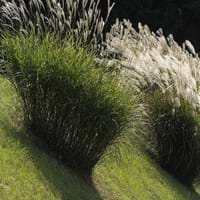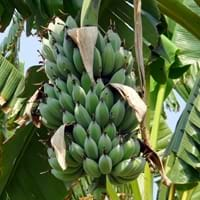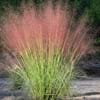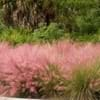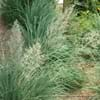Life Span
Perennial
Perennial
Origin
Hybrid origin
Hybrid origin
Types
Not Avaialble
Not Available
Habitat
Lake Sides, savannahs
Humid climates, Tropical regions
USDA Hardiness Zone
5-9
9-15
Sunset Zone
1a, 1b, 2a, 3a, 3b, 4, 5, 6, 7, 8, 9, 10, 11, 12, 13, 14, 15, 16, 17, 18, 19, 20, 21, 22, 23, 24
H1, H2, 21, 22, 23, 24
Habit
Clump-Forming
Clump-Forming
Flower Color
Not Available
White, Light Yellow
Flower Color Modifier
Bicolor
Bicolor
Fruit Color
Not Available
Yellow, Green, Gold
Leaf Color in Spring
Green
Green
Leaf Color in Summer
Light Green
Green
Leaf Color in Fall
Green, Purple, Burgundy, Bronze
Green
Leaf Color in Winter
Not Available
Light Green
Leaf Shape
Grass like
Linear
Plant Season
Summer, Fall
Spring, Summer, Fall, Winter
Sunlight
Full Sun, Partial Sun
Full Sun, Partial Sun
Growth Rate
Slow
Very Fast
Type of Soil
Clay, Loam, Sand
Loam, Sand
The pH of Soil
Acidic, Neutral
Acidic, Neutral
Soil Drainage
Average
Well drained
Bloom Time
Early Summer, Summer, Late Summer, Early Fall
Indeterminate
Tolerances
Drought
Drought
Where to Plant?
Ground
Container, Ground, Pot
How to Plant?
Rhizome division
Cuttings, Divison, Tissue culture
Plant Maintenance
Medium
Medium
Watering Requirements
Average Water Needs, Do Not over Water
Average Water Needs
In Summer
Lots of watering
Lots of watering
In Spring
Moderate
Moderate
In Winter
Average Water
Average Water
Soil pH
Acidic, Neutral
Acidic, Neutral
Soil Type
Clay, Loam, Sand
Loam, Sand
Soil Drainage Capacity
Average
Well drained
Sun Exposure
Full Sun, Partial Sun
Full Sun, Partial Sun
Pruning
Remove damaged leaves, Remove dead branches, Remove dead leaves
Remove damaged leaves, Remove dead branches, Remove dead leaves
Fertilizers
All-Purpose Liquid Fertilizer
All-Purpose Liquid Fertilizer
Pests and Diseases
No serious insect or disease problems
Banana aphid, Banana mosaic, Banana weevil
Plant Tolerance
Drought
Drought
Flower Petal Number
Single
Single
Foliage Texture
Coarse
Bold
Foliage Sheen
Glossy
Matte
Attracts
Crickets
Hummingbirds, Small mammals
Allergy
Not Available
Nausea
Aesthetic Uses
bank hedging, Mixed Border, Showy Purposes
Showy Purposes
Beauty Benefits
Not Available
Not Available
Environmental Uses
Air purification
Air purification
Medicinal Uses
No Medicinal Use
Nutrients
Part of Plant Used
Whole plant
Flowers, Leaves
Other Uses
Screen, Used as Biofuel, Used for making hedge
Used As Food
Used As Indoor Plant
No
No
Used As Outdoor Plant
Yes
Yes
Garden Design
Hedges, Mixed Border, Screening / Wind Break
Edible, Feature Plant, Fruit / Fruit Tree, Mixed Border, Tropical
Botanical Name
MISCANTHUS Giganteus
Musa acuminata
Common Name
Giant Silvergrass
Banana, Cavendish Banana
In Hindi
Giant Silvergrass
Cavendish Banana
In German
Riesenschilf
Cavendish Banana
In French
géant silvergrass
Cavendish Banana
In Spanish
Giant Silvergrass
Cavendish Banana
In Greek
Giant Silvergrass
Cavendish Banana
In Portuguese
Silvergrass gigante
Cavendish Banana
In Polish
Giant Silvergrass
Cavendish Banana
In Latin
Giant Silvergrass
Cavendish Banana
Phylum
Magnoliophyta
Magnoliophyta
Class
Lilopsida
Liliopsida
Order
Cyperales
Zingiberales
Clade
Angiosperms, Commelinids, Monocots
Angiosperms, Commelinids, Monocots
Tribe
Andropogoneae
Not Available
Subfamily
Panicoideae
Not Available
Number of Species
Not Available
Difference Between Giant Silvergrass and Cavendish Banana
If you are confused whether Giant Silvergrass or Cavendish Banana are same, here are some features about those plants to help you choose better. Many people think that these two plants have the same characteristics, but one can see Giant Silvergrass and Cavendish Banana Information and learn more about it. Fertilizers required for proper growth of Giant Silvergrass are All-Purpose Liquid Fertilizer, whereas for Cavendish Banana fertilizers required are All-Purpose Liquid Fertilizer. Hence, one should know the basic difference between Giant Silvergrass and Cavendish Banana if you are planning to have them in your garden to enhance its beauty.
<
Flowering PlantsImportance of Giant Silvergrass and Cavendish Banana
Want to have the most appropriate plant for your garden? You might want to know the importance of Giant Silvergrass and Cavendish Banana. Basically, these two plants vary in many aspects. Compare Giant Silvergrass and Cavendish Banana as they differ in many characteristics such as their life, care, benefits, facts, etc. Every gardener must at least have the slightest clue about the plants he wants to plant in his garden. Compare their benefits, which differ in many ways like facts and uses. The medicinal use of Giant Silvergrass is No Medicinal Use whereas of Cavendish Banana is Nutrients. Giant Silvergrass has beauty benefits as follows: Not Available while Cavendish Banana has beauty benefits as follows: Not Available.
Compare Facts of Giant Silvergrass vs Cavendish Banana
How to choose the best garden plant for your garden depending upon its facts? Here garden plant comparison will help you to solve this query. Compare the facts of Giant Silvergrass vs Cavendish Banana and know which one to choose. As garden plants have benefits and other uses, allergy is also a major drawback of plants for some people. Allergic reactions of Giant Silvergrass are Not Available whereas of Cavendish Banana have Nausea respectively. Having a fruit bearing plant in your garden can be a plus point of your garden. Giant Silvergrass has showy fruits and Cavendish Banana has showy fruits. Also Giant Silvergrass is not flowering and Cavendish Banana is not flowering . You can compare Giant Silvergrass and Cavendish Banana facts and facts of other plants too.
